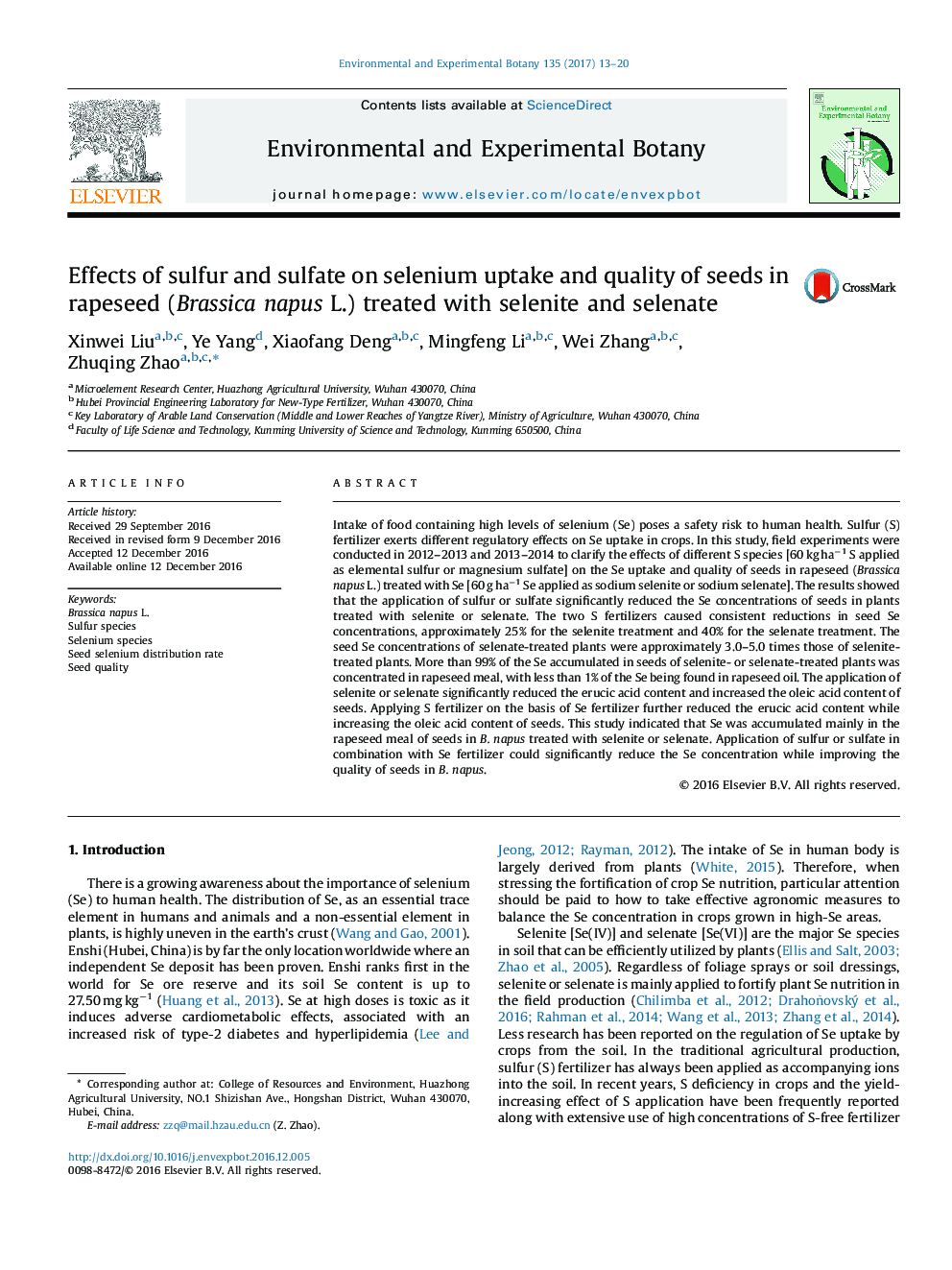| کد مقاله | کد نشریه | سال انتشار | مقاله انگلیسی | نسخه تمام متن |
|---|---|---|---|---|
| 5766682 | 1628042 | 2017 | 8 صفحه PDF | دانلود رایگان |

- The application of sulfur or sulfate caused consistent reductions in seed Se concentrations.
- The seed Se concentrations of selenate-treated plants were approximately 3.0-5.0 times those of selenite-treated plants.
- More than 99% of the Se accumulated in seeds of selenite- or selenate-treated plants was concentrated in rapeseed meal.
- The application of selenite or selenate significantly reduced the erucic acid content and increased the oleic acid content of seeds.
Intake of food containing high levels of selenium (Se) poses a safety risk to human health. Sulfur (S) fertilizer exerts different regulatory effects on Se uptake in crops. In this study, field experiments were conducted in 2012-2013 and 2013-2014 to clarify the effects of different S species [60 kg haâ1 S applied as elemental sulfur or magnesium sulfate] on the Se uptake and quality of seeds in rapeseed (Brassica napus L.) treated with Se [60 g haâ1 Se applied as sodium selenite or sodium selenate]. The results showed that the application of sulfur or sulfate significantly reduced the Se concentrations of seeds in plants treated with selenite or selenate. The two S fertilizers caused consistent reductions in seed Se concentrations, approximately 25% for the selenite treatment and 40% for the selenate treatment. The seed Se concentrations of selenate-treated plants were approximately 3.0-5.0 times those of selenite-treated plants. More than 99% of the Se accumulated in seeds of selenite- or selenate-treated plants was concentrated in rapeseed meal, with less than 1% of the Se being found in rapeseed oil. The application of selenite or selenate significantly reduced the erucic acid content and increased the oleic acid content of seeds. Applying S fertilizer on the basis of Se fertilizer further reduced the erucic acid content while increasing the oleic acid content of seeds. This study indicated that Se was accumulated mainly in the rapeseed meal of seeds in B. napus treated with selenite or selenate. Application of sulfur or sulfate in combination with Se fertilizer could significantly reduce the Se concentration while improving the quality of seeds in B. napus.
Journal: Environmental and Experimental Botany - Volume 135, March 2017, Pages 13-20